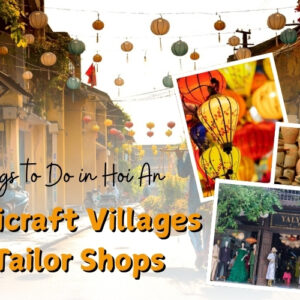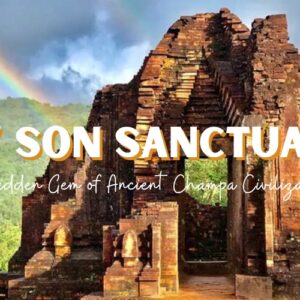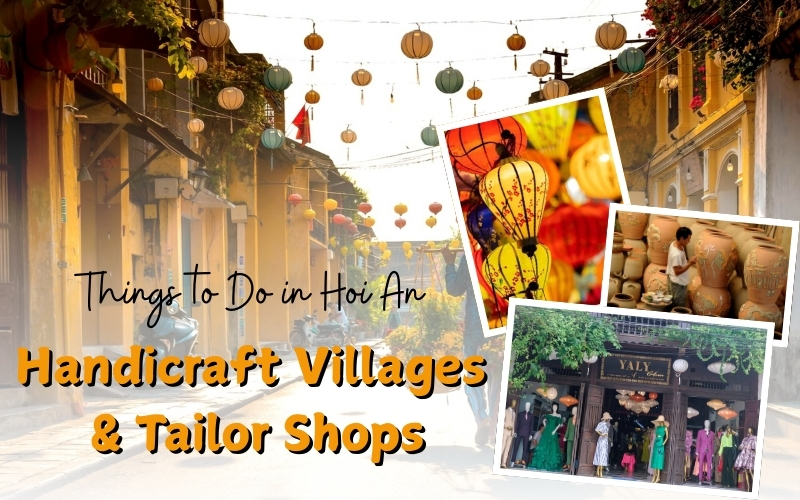
Hoi An is not only well-known for its lantern-lit alleys and historic beauty but also for a community of tailors and artisans who have lived here for decades, hence producing a vibrant and distinctive location unlike anywhere else. This blog will walk you through the rich cultural experiences at craft villages and tailor shops in Hoi An, where tradition meets innovation in every last detail. Along with useful advice to maximize your trip, we will walk you through the top locations to craft, create, and shop.
Overview of craft villages and tailor shops in Hoi An
Hoi An is a living museum of craftsmanship as well as a lovely town with lantern-lit streets and historic buildings. From the 15th to the 19th century, Hoi An was a busy trading port welcoming traders from China, Japan, and Europe, each leaving their imprint on the local culture. Thanks to this unusual mix of inspirations, which allows generation after generation to pass on artistic legacy like an heirloom, the town has become a haven for artisans.

Hoi An’s vibrant craft culture is rooted in generations of tradition
You will hear the rhythmic hum of sewing machines in a tailor’s shop as you wander through the little lanes of the Old Town, the clanging of pottery being formed in a nearby town or the rustle of silk being folded in readiness for a lantern-making lesson. Here, art permeates daily life rather than only being in galleries. Hoi An residents take great satisfaction in their work, which tells a narrative as much as it is a keepsake.
What makes this town special is that it welcomes you to participate in the process. From measuring for a custom-made outfit to folding silk into a lantern, Hoi An presents a special chance to interact with the local culture via your own hands.
Handicraft Villages in Hoi An
Hoi An was a busy trading port in the 15th and 16th centuries; so, traditional craft villages were founded there and have grown over many years, handed down through many generations. Hoi An still boasts twelve classic traditional craft villages today, and every one of them has individual beauty and is replicated most faithfully. In Hoi An, they can be seen as the crystallization of the very creative and hard labor effort of next generations of inhabitants.
Kim Bong Carpentry Village
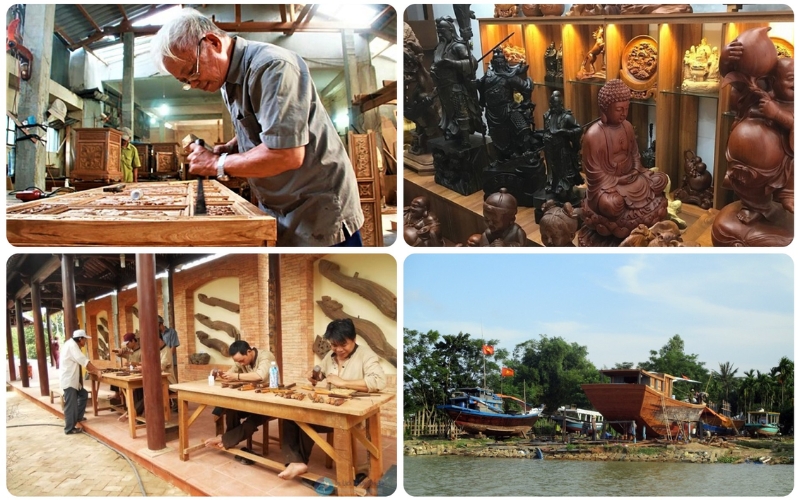
A glimpse into Kim Bong’s carpentry heritage
Address: Trung Ha Village, Cam Kim Commune, Hoi An
Opening hours: 8 am – 5 pm daily
With about 600 years of existence, Kim Bong carpenter village is most well-known. This little craft community had grown spectacularly by the 18th century and split into three main carpentry groups: shipbuilding, civil, and construction. Specifically, Kim Bong carpenters under the Nguyen Dynasty were chosen by the royal court to assist in royal works at Hue. Apart from developing locally, carpentry was exported to nations including China, Japan, and Spain.
Arriving in Kim Bong carpenter village, guests will be surrounded in the serene environment of a community beside the Thu Bon River. Not only can you see carving and engraving on wood under the direction of talented craftsmen, but you can also really feel the exactingness and elegance in each stage. Depending on the item, you can decide to purchase wooden handcrafted goods at the end of the road, ranging from 100,000 VND to several million VND.
Thanh Ha Pottery Village
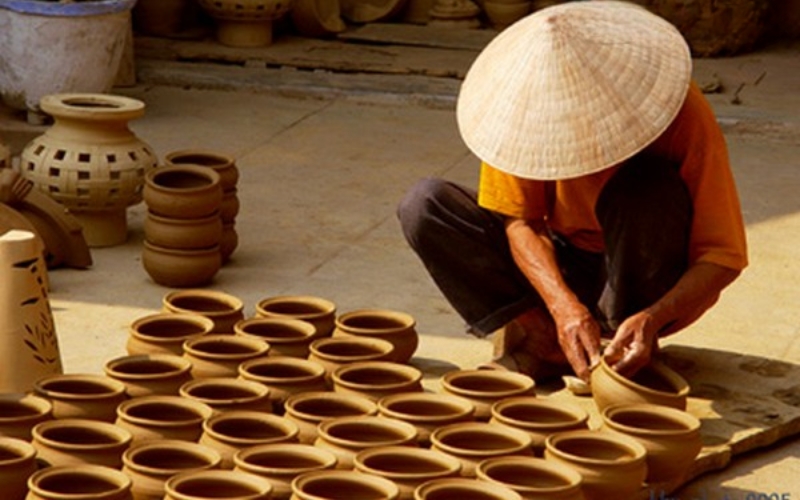
Watch local artisans shape clay into beautiful pottery using centuries-old techniques
Address: Pham Phan Street, Thanh Ha Ward, Hoi An
Opening hours: 8:30 am – 5:00 pm (Monday-Friday); 8:00 am – 5:30 pm (Saturday-Sunday)
Entrance fee: VND 35,000/adult; VND 15,000/child
About three kilometers west of Hoi An Ancient Town, Thanh Ha Pottery Village is among the first classic artisan communities in this region. Originally built in the sixteenth century, this pottery town was formerly a main supplier of bricks, tiles and ceramics for building projects in Hoi An and the Central area.
Visitors to Thanh Ha Pottery Village will get the chance to produce their own goods under the direction of artists in addition to witnessing the process of manufacturing the ceramics. Furthermore providing tourists with a distinctive experience is Thanh Ha Terracotta Park, with an area of almost 6,000m², which exhibits many ceramic artworks and replicas of world-class architectural works.
Hoi An Lantern Villages
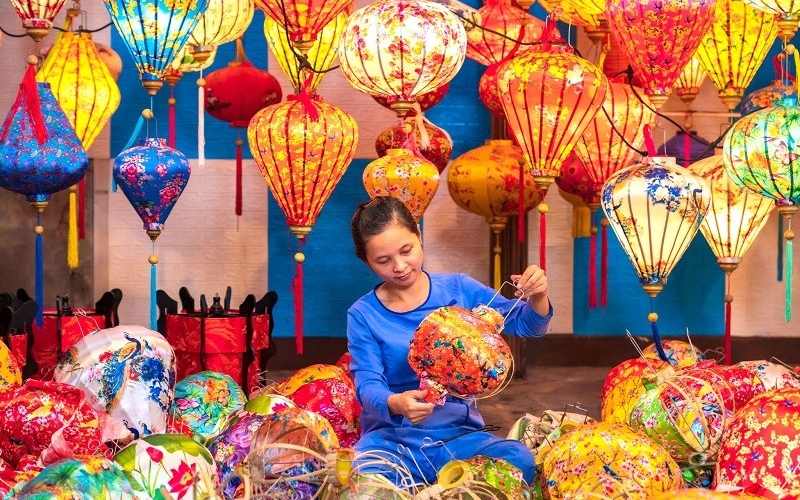
Join a local workshop and craft a lantern to light up your memories
In Hoi An, there are more than 32 establishments that make and sell traditional lanterns. Here are some famous lantern workshops that you can visit, including:
- Viet Lantern Workshop: No. 57 Ba Trieu Street, Minh An Ward
- Ha Linh Lantern Workshop: 72 Tran Nhan Tong, Cam Chau Ward
- Huynh Van Ba Lantern Workshop: 15A Phan Dinh Phung, Cam Son Ward
Hoi An lantern making is one of the 9 typical craft villages in Vietnam. For more than 400 years, the lantern-making trade has been integral to the people’s way of life and a symbol of the historic town.
Seeing the lantern artisan communities in Hoi An will help you to appreciate the technique used to create a striking, beautiful lantern. From the antique lanterns, the residents have continuously invented and developed to make the lanterns more varied in form, color and substance. You can buy neatly arranged lanterns to bring back as gifts for relatives or friends.
Ban Thach Mat Village
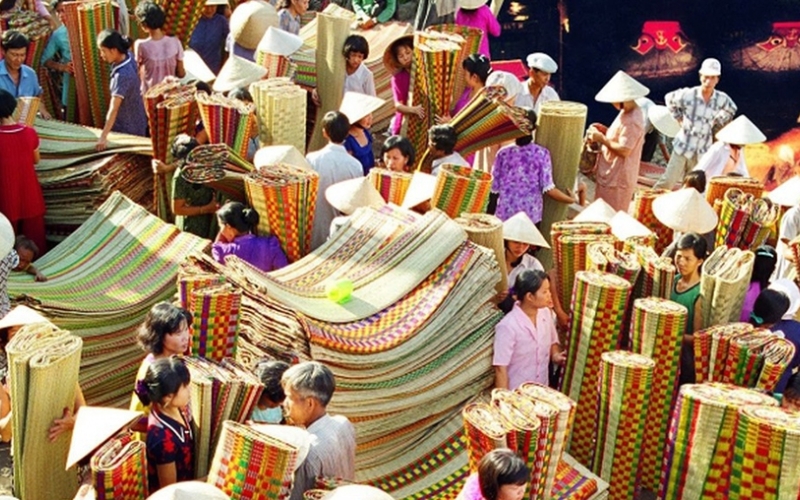
Early morning bustle at Ban Thach Village Market, where vibrant handmade mats are traded at dawn
Address: Duy Vinh commune, Duy Xuyen district, Hoi An
Opening hours: All day
Visitors of Ban Thach Mat village will be able to see the traditional mat weaving technique. Ban Thach mats have a special quality in that their patterns are produced from jute and sedge fibers rather than printed designs like elsewhere.
Expert artisans will show each step, from dyeing to weaving to sedge processing, so enabling guests to better appreciate the creativity and sophistication of this trade. Visitors can also visit the bustling mat market open from 4 to 5 am, where numerous traditional sedge mat products with intricate designs are offered, fit as keepsakes.
Hoi An Silk Village
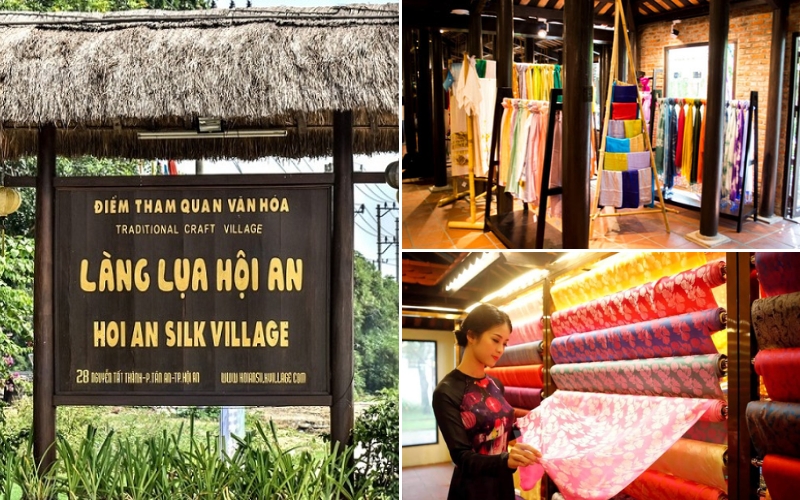
Step into the world of Vietnamese silk at Hoi An Silk Village
Address: 28 Nguyen Tat Thanh Street, Cam Pho Ward, Hoi An
Opening hours: 8 am – 9 pm
Entrance fee: 50,000 VND/person.
Hoi An Silk Village exhibits, preserves, and recreate the renowned traditional silk weaving and silk reeling craft. Visiting the silk town will teach you about the 17th century source of the “Silk Road on the sea”.
This craft village is proud of owning a collection of 100 exquisite ao dai and distinctive traditional attire of 54 ethnic groups from Vietnam. Visitors also have the chance to see the mulberry garden, discover the hand-weaving, silk reeling, and silkworm farming techniques. Under the direction of talented artists, you can particularly go through the stages of selecting mulberry leaves, feeding silkworms, spinning silk and weaving silk. Discover how to tell real from imitation Hoi An silk and not miss the silk product showcase!
Tra Que Vegetable Village
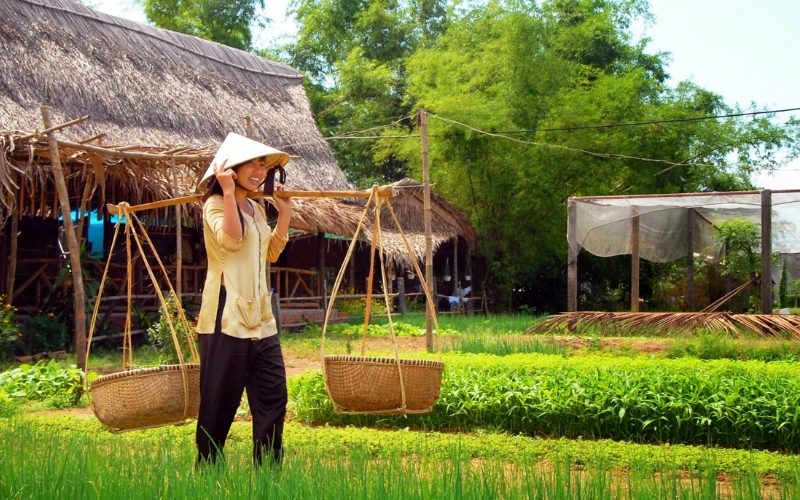
Experience local farming life firsthand at Tra Que Vegetable Village
Address: Tra Que Village, Cam Ha Commune, Hoi An
Opening hours: All day
Entrance fee: 35,000 VND/person, including sightseeing and participating in experiential activities in the village.
Tra Que Vegetable Village is a green and serene location attracting visitors with its rich green vegetable fields and healthy air, around 3km from the center of Hoi An old town. Arriving at this village, guests will be able to become actual farmers, directly engaged in chores including plowing the ground, sowing seeds, watering and gathering vegetables. Apart from vegetable farming activities, guests can participate in a culinary lesson where they will be guided on how to make Hoi An unique delicacies including banh xeo, Quang noodles, utilizing fresh garden ingredients.
Phuoc Kieu Bronze Casting Village
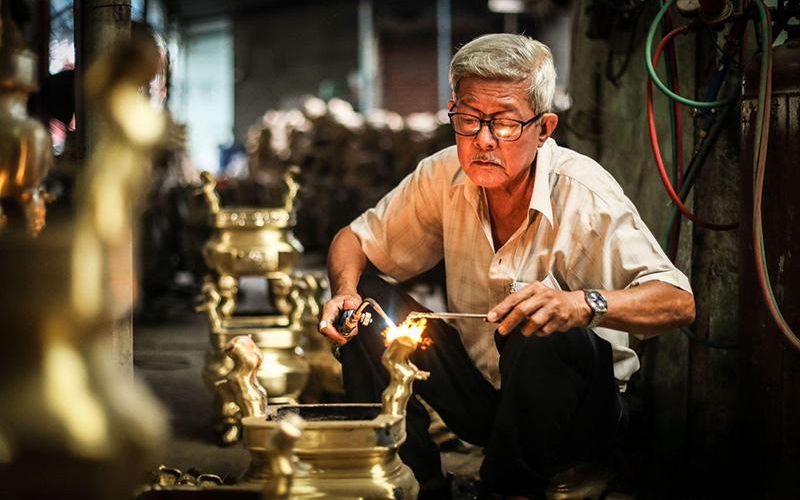
A local artisan shaping bronze at Phuoc Kieu Bronze Casting Village
Address: Dien Phuong Commune, Dien Ban Town, Quang Nam Province
Opening hours: 8 am – 5 pm Monday to Saturday
Entrance fee: Free
Phuoc Kieu Bronze Casting Village is one of the oldest craft villages in Quang Nam with over 400 years of history. It is known as the birthplace of gongs, and is famous for many other famous traditional cultural products such as musical instruments, feng shui items, gongs, cymbals, worship items,… Visiting the village not only gives you a glimpse into one of Vietnam’s oldest metalworking traditions, but also gives you the opportunity to meet the craftsmen, see bronze come to life, and learn about the spiritual meaning behind their work.
Tailor shops in Hoi An
One of the most unique experiences that visitors to Hoi An cannot miss is the express tailoring service. The town is well-known for its tailor shops, which let guests purchase shockingly reasonably priced properly fitting clothing. Though there are hundreds of tailor stores in the town, some have developed a great name for consistency and quality. Here are a few stores you might consult for your visit to Hoi An:
Yaly Tailor Shop
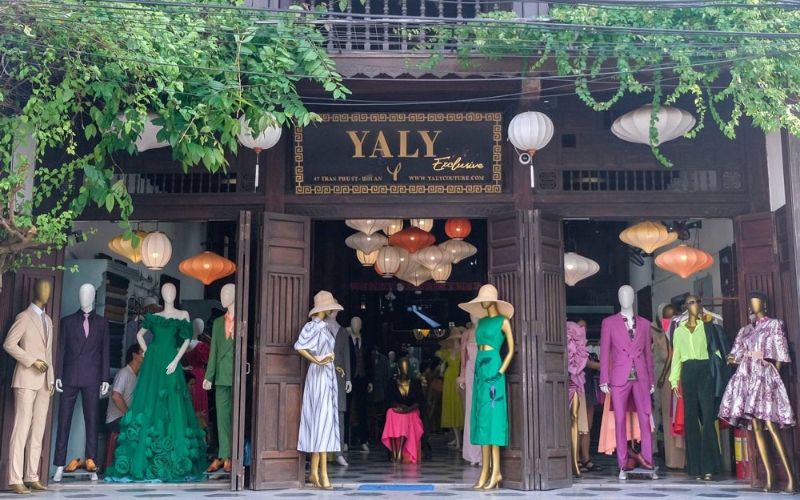
Exploring Yaly Tailor Shop, one of Hoi An’s most trusted names in bespoke fashion
Address:
- 358 Nguyen Duy Hieu, Cam Chau Ward, Hoi An.
- 47 Nguyen Thai Hoc, Minh An Ward, Hoi An.
- 47 Tran Phuc, Minh An Ward, Hoi An.
Especially drawing a lot of foreign visitors, Yaly Tailor Shop is among the most well-known tailor shops in Hoi An and was privileged to be highlighted on Forbes magazine on page. The great workmanship and premium materials with a range of colors and designs of this tailor shop are well known. Yaly is unique in that the designers will work with you, create individual designs and provide honest recommendations depending on your body type and style choices.
Bebe Tailors
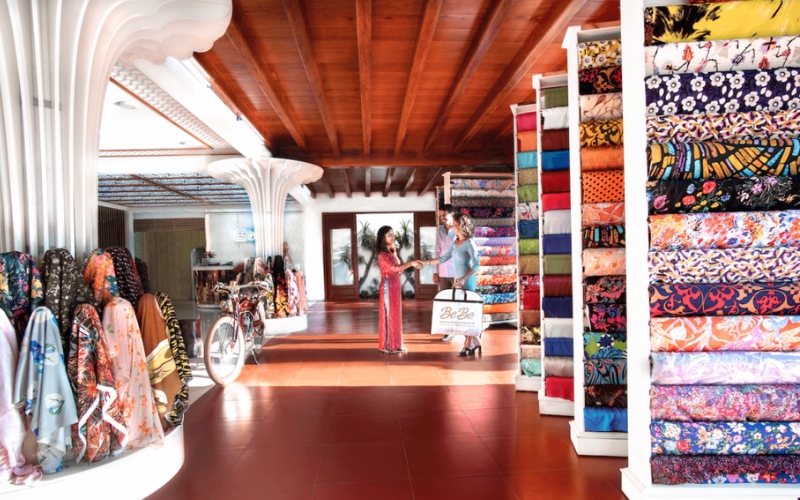
A warm welcome awaits every guest at Bebe Tailors
Address:
- 05-07 Hoang Dieu, Hoi An
- 95 Phan Chau Trinh, Hoi An
- 40 Tran Hung Dao, Hoi An
Bebe Tailors is a long-standing tailor shop, established and developed through many generations. From a small tailor shop to now widely developed with 3 branches in Hoi An. The shop is always loved by both new and old customers, thanks to the balance between quality, speed and affordable prices.
With a dedicated staff, you will be fully advised on colors, styles and materials to tailor an outfit that suits your body and personality. They also save your measurements in your profile for future re-ordering, so you can tailor an additional shirt or dress even when you are home.
A Dong Silk
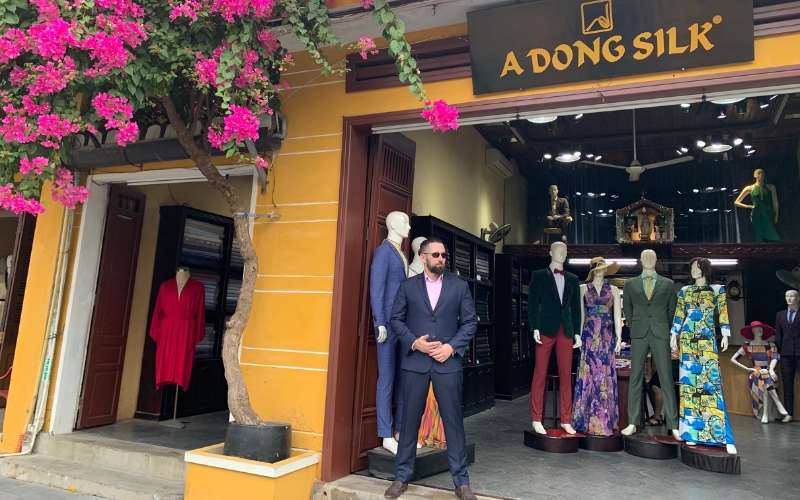
Experience the art of bespoke fashion at A Dong Silk
Address:
- 40 Le Loi, Minh An Ward, Hoi An
- 91 Tran Hung Dao, Minh An Ward, Hoi An
- 62 Tran Hung Dao, Minh An Ward, Hoi An
Established in 1997, A Dong Silk is a tailoring brand also among the first tailoring stores in the historic area. From custom suits and dresses to bridal gowns, the store has a large selection of current and trendy, painstakingly detailed clothes.
With minimal turn-around times, as low as two days, A Dong Silk is well-known for its quick delivery internationally for extra convenience. Although prices could be more than in other stores, customers generally value the quality and first-rate service, thus it is a good investment for individuals looking for custom-made clothes in Hoi An.
Bao Khanh Silk
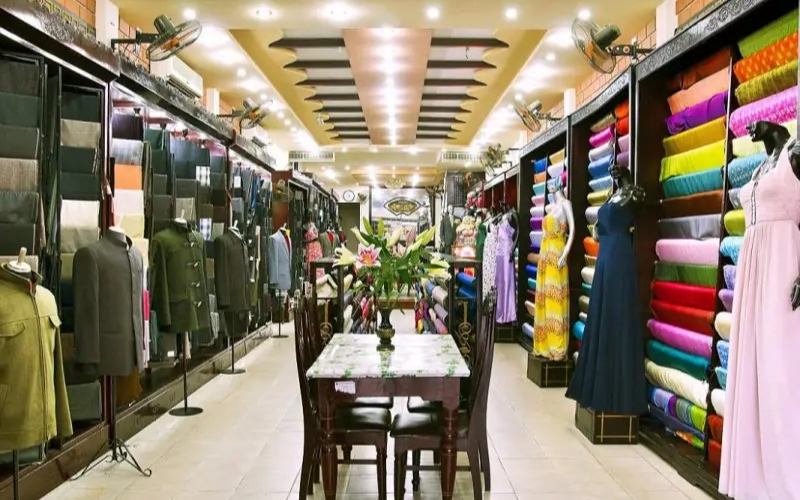
A tailor at Bao Khanh Silk takes precise measurements for a custom-made outfit
Address: 101 Tran Hung Dao, Hoi An
This highly rated tailor shop has both casual and party wear designs that are very beautiful. Bao Khanh Silk was voted the number 1 tailor shop in Vietnam by Sunday Times Travel magazine and ranked 2nd in the list of the top 25 tailor shops in the world. Bao Khanh has a variety of silks, a creative tailor team and very affordable prices.
B’Lan Silk
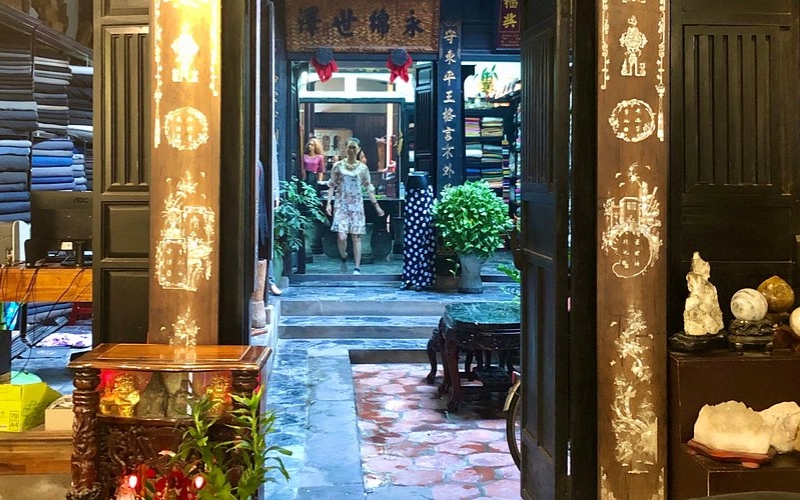
Explore B’Lan Silk inside a beautifully preserved old Hoi An house
Address: 23 Tran Phu, Cam Chau, Hoi An
B’Lan Silk is both a tailor shop and an ancient house that is over 200 years old. The store specializes in modern designs as well as customizing classic Vietnamese costumes including the recognizable Ao Dai. Furthermore, the tailor shop is a great spot for you to wait and admire the antique beauty with various Hoi An-inspired decorations in colors.
> > > For a well-rounded experience, we recommend complementing your visit to handicraft villages and tailor shops with our Hoi An tours, carefully planned to highlight the cultural diversity, local appeal, and outstanding attractions of the town.
Suggested itineraries for one day exploring Hoi An
Itinerary 1
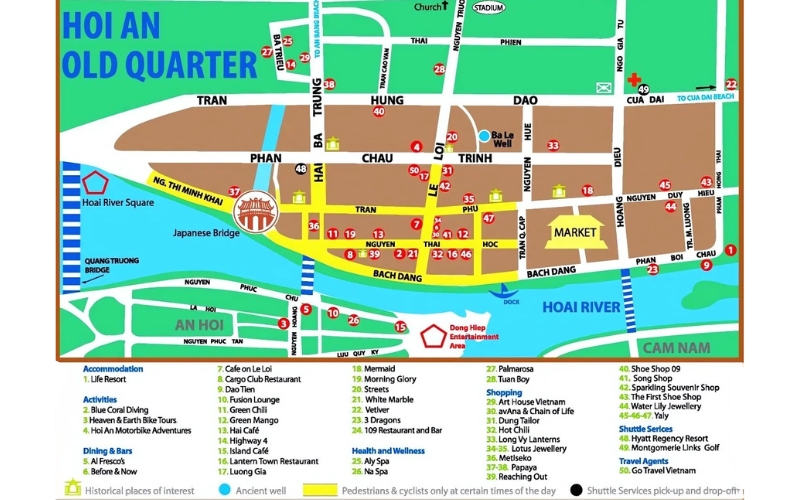
Hoi An Tourist Map
Wake up early and start your day with a scenic cycling tour to Tra Que Vegetable Village, just a few kilometers from the town. Afterward, continue your ride along the Thu Bon River to Thanh Ha Pottery Village, famous for its centuries-old ceramic craftsmanship. Working with the local artists, try creating your own clay pot on a conventional foot-powered wheel. You might stop at a tiny neighborhood market along the way for fresh food and cultural insights.
Get back to Hoi An and savor lunch at a nearby eatery. Visit a well-known tailor shop following your meal to be measured and order a bespoke garment. You could wander around the historic town, see some famous sites like the Japanese Covered Bridge, Old House of Phung Hung or just unwind with a spa treatment while waiting. In the evening, spend times at a riverside restaurant or a lantern boat ride.
> > > Want to explore even more of Hoi An beyond the tailor shops and lantern-lit streets? Discover our other full-day cycling tour that takes you through peaceful villages, local farms, and riverside paths for a truly immersive countryside experience.
Itinerary 2
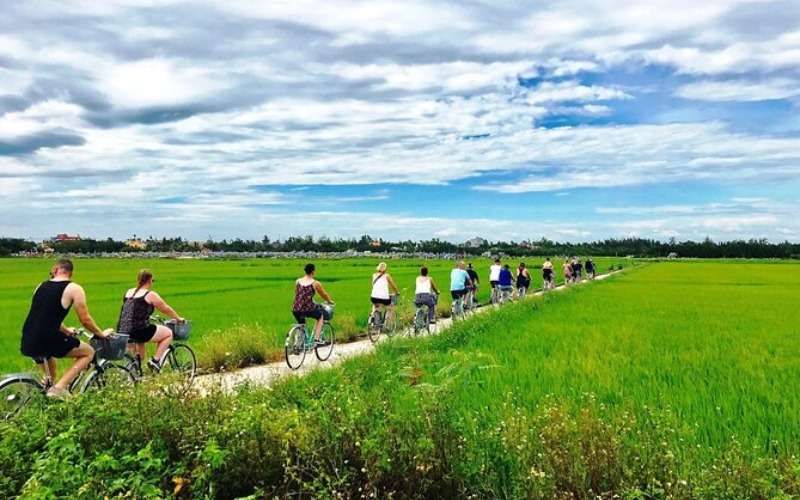
Cycling through the peaceful rice fields of Hoi An’s countryside
After breakfast, head to a reputable tailor shop in the town. Arrive around 8 AM to avoid the crowd and give yourself maximum time for the fitting later. Spend the rest of your morning exploring Hoi An Ancient Town, with key spots such as the Japanese Covered Bridge and assembly halls. Have lunch at a local restaurant, where you can enjoy specialties in a cool, heritage setting.
Visit a nearby lantern-making workshop early afternoon to pick up skills in creating your own silk lantern and bringing it home. Keep Ban Thach Mat Village with a half-hour ride through the verdant rice fields and calm countryside. Come back to Hoi An and check in with your tailor for the fitting if available. Then enjoy the evening with a riverside dinner or walk through the lantern streets.
Tips for a great experience
To make your visit to Hoi An’s craft villages and tailor shops complete, you can refer to the following experiences:
- Choose the time to visit: The ideal time to visit craft villages in Hoi An is from February to August, when the weather is dry and cool, with temperatures ranging from 25-30°C. During this time, you will be comfortable visiting and participating in outdoor activities.
- schedule your activities early in the day or at the start of the vacation, especially if you want to have a custom-made outfit. Tailoring can take up to two days, thus Hoi An also has numerous craft villages just waiting for you to visit.
- Start your journey early in the morning to have the most relaxed travel to the craft villages. Some craft villages, such as Thanh Ha Pottery Village or Tra Que Vegetable Village, are mostly outside, which can make you hot if you visit in the middle of the day. Early arrival will also provide you a more private and peaceful experience. Before the tourists arrive, you will have more time and space to engage with the local artisans.
- Since there are many tailors in town with varying pricing, be clear about the price and your needs for the outfit with the staff before opting to have your clothes customized at a tailor. Furthermore indicate your hurry since the turnaround time influences both the workmanship and the price.
- When you receive the outfit, feel free to check every detail you want. Don’t just try it on in front of the mirror, move around to get a feel for how the outfit fits. If you are not satisfied, do not hesitate to ask the staff to edit it again.
- Go with a local guide: Many tourists skip this, but hiring a local guide will enhance the trip. Guides will translate and help you communicate better with artisans who may not speak English.
- Bring some cash: Small workshops and family-run craft workshops may not accept cards. It is a good idea to bring some Vietnamese Dong to pay for entrance fees, souvenirs, snacks or tips.
Hoi An leaves visitors with an ancient and simple beauty, and one of the places that preserves that characteristic is the traditional craft villages and world-famous tailor shops. When you join a workshop or visit a local tailor, you are not only getting a souvenir, you are becoming part of a tradition that has shaped Hoi An’s identity for centuries. So take your time and leave Hoi An with more than just photos, leave with stories, skills and handmade treasures. Are you ready to make your time in Hoi An memorable? Contact us today to customize your cultural itinerary.
Read more:
